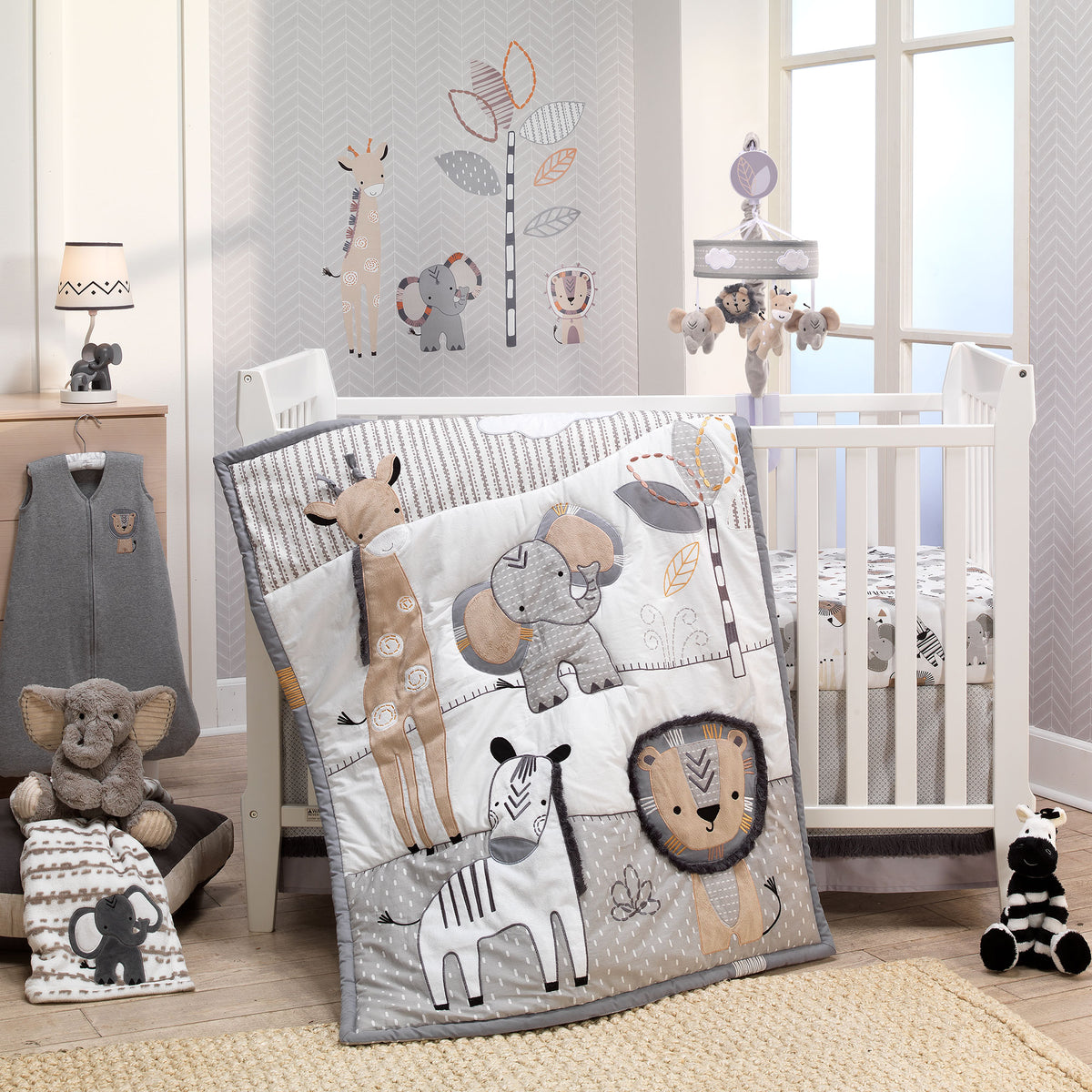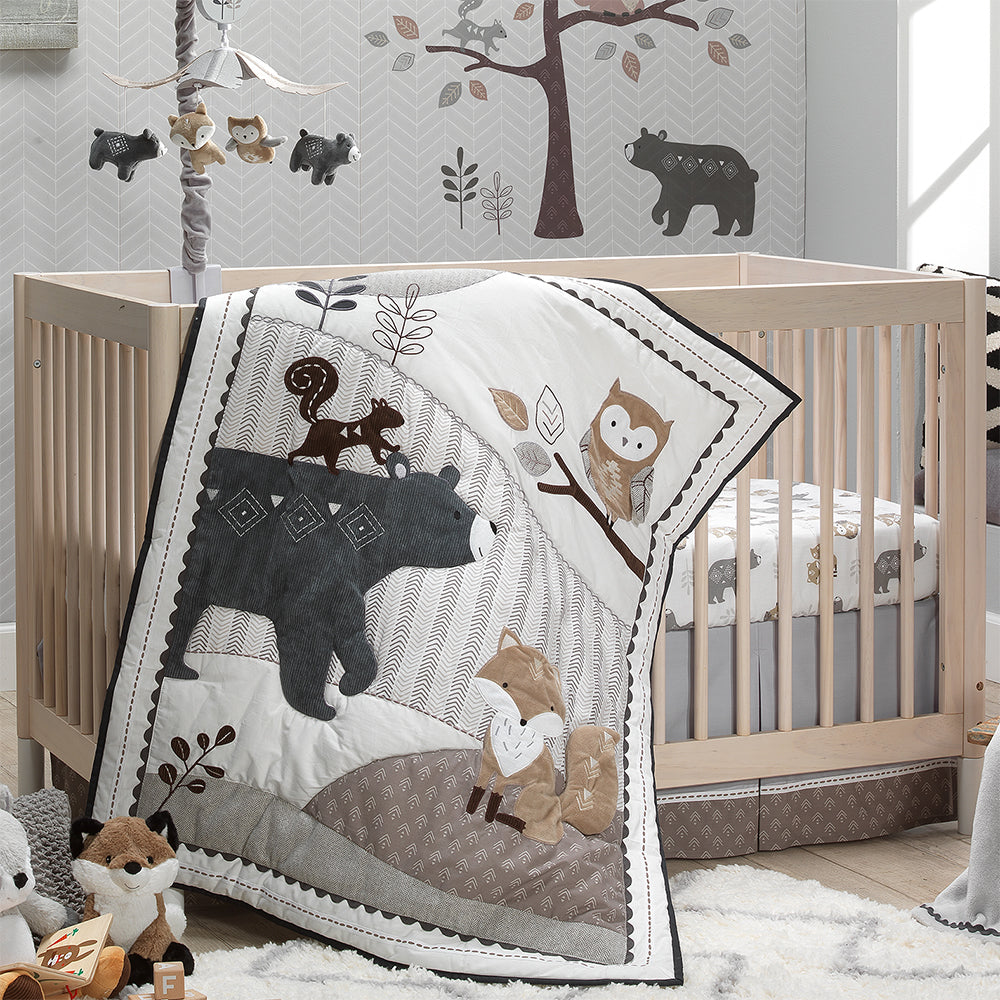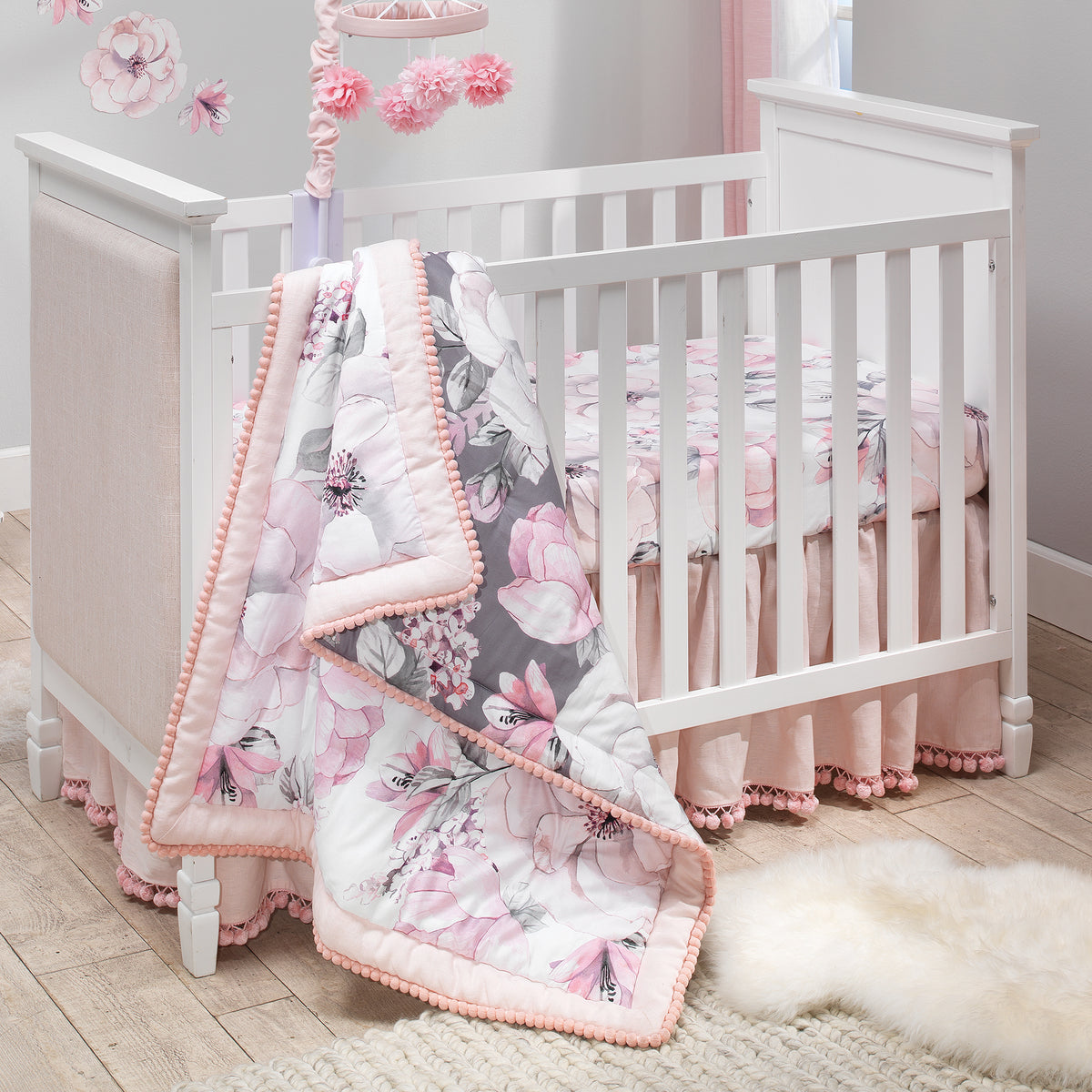Between receiving blankets, swaddles, plush blankets, quilts, and security blankets, knowing which baby blanket to pick is a challenge. How big should it be? What’s the difference between them? As a mom of three, I have plenty of experience with baby blankets. I wrote this guide to demystify baby blanket sizes for every stage, from newborns to toddlers, so you can choose with confidence.
The Visual Baby Blanket Size Chart: A Quick Reference on How and When to Use Each
So how big is a baby blanket? The answer depends on its purpose. The average size of a baby blanket** is roughly 30" x 45", but a swaddle needs to be larger and a security blanket much smaller. Here is a chart outlining the common types of baby blankets and their dimensions.

| Blanket Types | Average Size (inches) | Best For | Pro Tip |
| SECURITY OR LOVEY | 12 BY 12 | 6 MONTHS + | FOR COMFORT, NOT SLEEP BEFORE AGE 2 |
| RECEIVING | 30 BY 30 TO 40 BY 40 | NEWBORN (0 TO 3 MONTHS) | SIMILAR TO A SWADDLE, ALSO IDEAL FOR A BURP CLOTH |
| SWADDLE | 40 BY 40 TO 45 BY 45 | NEWBORN (0 TO 4 MONTHS) | STOP SWADDLING WHEN YOUR BABY CAN ROLL OVER |
| STROLLER | 22L BY 30L TO 30W BY 35L | ALL AGES | IDEAL FOR THE STROLLER AND CAR SEAT |
| CRIB | BETWEEN 36W AND 60L | 12 TO 18 MONTHS + | AVOID USE FOR SLEEPING BEFORE 12 MONTHS |
A Staged Guide: Matching the Blanket to Your Baby's Growth
I’ve been through babyhood three times and know every trick in the baby blanket book. Blankets serve many purposes from keeping them cozy in the car to creating a soft surface for tummy time and soothing them when they need comfort. With infants, it’s also important to take care when using blankets to keep them safe. Here’s my guide to using baby blankets at every stage:
The Newborn Stage (0-4 Months): Swaddling, Receiving, and Safety
The first few months are all about security and practicality. Newborns sleep a lot, and cozy blankets keep them safe and warm while they rest.
Receiving Blankets : The Versatile Essential
Receiving blankets are the jack of all trades in baby blankets. Typically, receiving blanket sizes are smaller, making them a versatile choice. I used receiving blankets as a comfortable everyday blanket to wrap up my children as newborns.
But, I also found them as practical as burp cloths or for wiping dirty faces and noses. I always kept a few on hand for unforeseen accidents or needs. Because they’re small and thin, they’re easy to throw into your diaper bag.
Swaddle Blankets : A Comforting Staple
My mother-in-law taught me how to swaddle my oldest son. Swaddling is an excellent way to calm a fussy infant. Since they are used to being in small spaces in the womb, a swaddle feels familiar and comforting.
Swaddling also prevents the startle or Moro reflex. When startled by a loud noise or quick movement, your baby suddenly lifts their arms. I remember this reflex waking my kids when they were infants. Swaddle blankets helped keep their arms in place, allowing them to sleep longer.
The ideal swaddle blanket size is on the larger size. A swaddle should measure at least 40 inches by 40 inches. This gives you enough fabric to wrap your baby up and tuck the swaddle securely.
Explore soft swaddle blankets here.
When swaddling, remember to follow safe sleep guidelines. The swaddle should be tight and the only blanket used. Also, experts recommend you stop swaddling when your baby learns to roll over. You don’t want your baby to accidentally roll over while swaddled and get stuck.
Once you can’t safely swaddle your baby, a great alternative are wearable blankets. These blankets keep your little one warm while also meeting safe sleep guidelines.
The Infant Stage (4-12 Months): Tummy Time, Travel, and First Cuddles
As your baby becomes more mobile and aware, their blanket needs change. At this stage, you can bring a few more blankets into the mix.
Stroller Blankets : For On-the-Go Comfort
A stroller blanket is just the right size for keeping your little one cozy in the stroller or carseat. It’s sized to lay over them without dragging on the ground.
Some stroller blankets even come with holes for inserting seatbelt buckles. Others feature velcro straps or snaps that make it easy to attach it to your stroller. You can also find stroller clips that you can use to secure the blanket to the carseat or stroller.
Stroller blankets tend to be a bit thicker, meaning they can also double as a tummy time mat as long as you’re supervising. Or, lay out the blanket in your yard for tummy time outdoors.
Explore cozy stroller blankets for your little one.
Security Blankets (Loveys) : A Cuddly Companion
As babies grow, they start enjoying toys and can do a better job of holding onto them. It’s the ideal time to offer your little one a small, safe comfort object like a lovey or security blanket.
The small size of a security blanket makes it a safe option. You can offer your little one this toy when they’re awake and you can supervise. Over time, my children grew attached to their favorite stuffy security blankets. It helped calm them down when they were upset, for example while on a car ride.
For safety, your child shouldn’t sleep with a lovey or security blanket until they are over 1 year old.
Find their first best friend in our collection of adorable security blankets.
The Transition to a Crib Blanket
As your baby approaches their first birthday, you may wonder if they can start using a real blanket. I was also eager for my little ones to use a real blanket. However, safety comes first.
-
The Safety-First Rule: AAP guidelines state clearly that loose blankets are only safe once a child is at least 12 months old and has the mobility to move freely. Always consult your pediatrician for more clarity.
-
The Crib Blanket Explained: The crib blanket is often a child’s first real blanket. Typically measuring about 40 inches wide by 60 inches long, it fits a standard toddler bed which uses a standard crib mattress. Plus, crib blankets typically use standard materials and don’t feature too many embellishments in order to avoid choking hazards. A quilt is a popular option.
Beyond the Size: What Else Should Parents Consider?
Baby blanket sizes are an essential part of the equation when picking the right blanket for your needs. However, it’s only one piece of the puzzle. Here are some other features I always considered when choosing blankets for my own children.
Materials
Consider the purpose of the blanket as well as the season. For example, muslin is ideal for swaddles because it stretches nicely to get a tight wrap. Breathable organic cotton is best for babies with sensitive skin, like my daughter.
During the winter, you might want a warm fleece stroller blanket. However, in the summer, a light cotton blend is ideal for creating shade or adding a light cover.
Weave & Breathability
The ideal weave and breathability also depend on the season. A loose cotton weave promotes breathability and air flow while still providing comfort.
For the colder months, a thermal weave is ideal. This weave creates little bumps, often in squares, that trap in air and hold in heat. At the same time, this type of weave ensures breathability. For infants, that’s a major plus on the safety side.
Common Mistakes to Avoid When Choosing a Baby Blanket

As a mom, I’ve made plenty of mistakes along the way. I’ve also witnessed the mistakes of others. Although perfection is impossible, learning from mistakes can help make your parenting journey easier while also ensuring your baby’s safe.
Mistake 1: Buying a blanket that's too small to swaddle effectively.
Newborns are so tiny, it seems impossible that you’d need so much fabric. However, swaddling involves lots of folding and wrapping. I was shocked the first time my mother-in-law turned my oldest son into a perfect little burrito with such a large blanket. Choose a swaddle that’s at least 40 inches by 40 inches. Also, opt for thinner fabrics for the ideal swaddle.
Mistake 2: Using a thick, heavy blanket in a car seat.
Using a thick blanket or even putting your child in a heavy coat can interfere with the seat belt and buckle. Your baby may even slide out! That’s why it’s best to put the blanket over the buckle and straps.
Mistake 3: Assuming all blankets are safe for unsupervised sleep.
Babies under the age of 12 months are at greater risk for SIDS and need to sleep in an empty crib. Before your child turns one, use swaddles (up to about 4 months old) or wearable blankets. Other blankets should only be used with supervision.
Your Baby Blanket Questions, Answered
Do you still have questions about baby blankets? Here are some frequently asked questions and answers.
How many blankets does a newborn need?
Newborns need a few blankets. Here’s how many of each type you need:
-
3 swaddles (1 in use, 1 clean, and 1 in the laundry)
-
2-3 receiving blankets for use as lightweight blankets, burp cloths, etc.
-
1 stroller blanket for the stroller and carseat in colder weather
-
1 stuffy security blanket
-
1 wearable blanket for when your baby outgrows their swaddles. Start with 1 to make sure your baby likes the style and then buy more.
Can I use a receiving blanket for swaddling?
In a pinch, you can definitely use a receiving blanket for swaddling. However, your infant will soon outgrow the receiving blanket. Also, swaddles are usually stretchier which makes it easier to get a tight swaddle which is safer for your baby.
How do I properly care for different types of baby blankets?
Baby blankets typically offer washing and care instructions. Personally, I wash them in the washing machine on a delicate cycle with gentle detergent and air dry them.
What is the standard baby shower gift blanket size?
For gifts, it’s best to choose a versatile blanket such as a stroller blanket or receiving blanket.
You're Ready to Choose the Perfect Blanket
Now, when you need a blanket for your baby, you’ll know exactly which one to grab. Whether you need a swaddle to sooth your newborn to sleep or a stroller blanket for tummy time, you can choose with confidence.
Explore our thoughtfully designed baby blankets to find the right one for your family.






